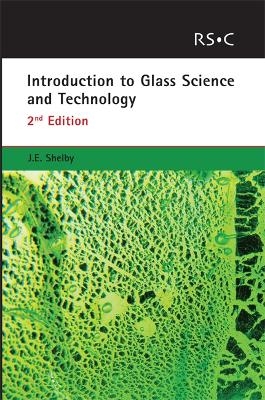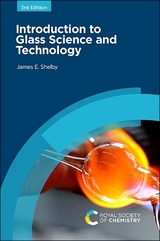
Introduction to Glass Science and Technology
Seiten
2005
|
2nd New edition
Royal Society of Chemistry (Verlag)
978-0-85404-639-3 (ISBN)
Royal Society of Chemistry (Verlag)
978-0-85404-639-3 (ISBN)
Zu diesem Artikel existiert eine Nachauflage
Intended primarily as a textbook, this book will also be invaluable to the engineer or scientist who desires knowledge regarding the formation, properties and production of glass.
This book provides a concise and inexpensive introduction for an undergraduate course in glass science and technology. The level of the book has deliberately been maintained at the introductory level to avoid confusion of the student by inclusion of more advanced material, and is unique in that its text is limited to the amount suitable for a one term course for students in materials science, ceramics or inorganic chemistry. The contents cover the fundamental topics of importance in glass science and technology, including glass formation, crystallization, phase separation and structure of glasses. Additional chapters discuss the most important properties of glasses, including discussion of physical, optical, electrical, chemical and mechanical properties. A final chapter provides an introduction to a number of methods used to form technical glasses, including glass sheet, bottles, insulation fibre, optical fibres and other common commercial products. In addition, the book contains discussion of the effects of phase separation and crystallization on the properties of glasses, which is neglected in other texts. Although intended primarily as a textbook, Introduction to Glass Science and Technology will also be invaluable to the engineer or scientist who desires more knowledge regarding the formation, properties and production of glass.
This book provides a concise and inexpensive introduction for an undergraduate course in glass science and technology. The level of the book has deliberately been maintained at the introductory level to avoid confusion of the student by inclusion of more advanced material, and is unique in that its text is limited to the amount suitable for a one term course for students in materials science, ceramics or inorganic chemistry. The contents cover the fundamental topics of importance in glass science and technology, including glass formation, crystallization, phase separation and structure of glasses. Additional chapters discuss the most important properties of glasses, including discussion of physical, optical, electrical, chemical and mechanical properties. A final chapter provides an introduction to a number of methods used to form technical glasses, including glass sheet, bottles, insulation fibre, optical fibres and other common commercial products. In addition, the book contains discussion of the effects of phase separation and crystallization on the properties of glasses, which is neglected in other texts. Although intended primarily as a textbook, Introduction to Glass Science and Technology will also be invaluable to the engineer or scientist who desires more knowledge regarding the formation, properties and production of glass.
Introduction; Principles of Glass Formation; Glass Melting; Immiscibility/Phase Separation; Structure of Glasses; Viscosity of Glassforming Melts; Density and Thermal Expansion; Transport Properties; Mechanical Properties; Optical Properties; Glass Technology; Bibliography; Subject Index.
| Erscheint lt. Verlag | 12.1.2005 |
|---|---|
| Zusatzinfo | No |
| Verlagsort | Cambridge |
| Sprache | englisch |
| Maße | 156 x 234 mm |
| Gewicht | 610 g |
| Themenwelt | Technik ► Maschinenbau |
| ISBN-10 | 0-85404-639-9 / 0854046399 |
| ISBN-13 | 978-0-85404-639-3 / 9780854046393 |
| Zustand | Neuware |
| Haben Sie eine Frage zum Produkt? |
Mehr entdecken
aus dem Bereich
aus dem Bereich
Normung, Berechnung, Gestaltung
Buch | Softcover (2023)
Springer Vieweg (Verlag)
39,99 €
Buch | Softcover (2023)
Springer Vieweg (Verlag)
24,99 €
Buch | Softcover (2023)
Springer Vieweg (Verlag)
24,99 €



